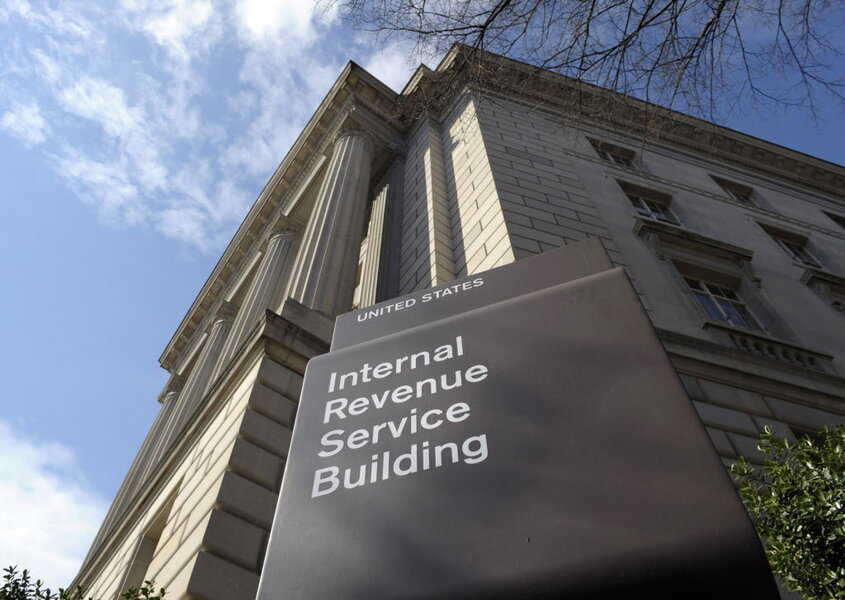How to resolve your tax debt
Most people don’t want to be behind on taxes, but if you do fail to pay the Internal Revenue Service, it’s important to know what happens. Here’s a look at the collections process and how you can resolve tax debt.
Tax assessment and collections
When the IRS determines that you owe the government money, it assesses you a tax. It can assess taxes when you file a return or when you don’t pay your full balance. It might also assess taxes after an audit in which the IRS doesn’t agree with a position on your tax return, perhaps because you miscalculated the amount you owed.
The IRS has 10 years from the date of assessment to collect the taxes owed, though you may be able to extend the statute of limitations.
When you owe money, you’ll receive a notice of assessment that asks you to pay your tax bill. If you don’t pay within 30 days, you’ll receive another notice. Unless you pay, you’ll continue to receive notices or certified letters from the IRS until it sends you a Final Intent to Levy notice.
If you don’t act within 30 days of receiving this letter, either by paying your bill or appealing the amount of taxes that you owe, the IRS will file a lien against you. This means it can legally seize your property to satisfy your debt, perhaps by garnishing your wages, levying your bank accounts or taking other measures.
Resolving your debt
Fortunately, there are several ways to resolve a tax debt.
1. Establishing an installment arrangement
Asking for an installment arrangement is probably the most popular way to address tax debt. This means is that you agree to pay a certain amount of money every month — for up to 72 months — until your tax debt is paid off. To ask for an installment arrangement, file Form 9465 with the IRS.
Before you take this step, be aware that penalties and interest accrue while you pay off the debt. So it’s better not to take the full 72 months to eliminate your balance.
Further, as a term of the installment agreement, you promise to file your tax returns and pay any associated debts on time. Failure to do so will undo your installment agreement.
Asking for an installment arrangement extends the statute of limitations for the IRS to collect on your debt by two years.
2. Receiving ‘currently non-collectible’ status
Another way to temporarily resolve your IRS debt is to ask to be put on currently non-collectible status. This will stop all IRS collection actions. For example, the agency won’t be allowed to file a lien against you.
Typically, you’ll qualify for CNC status if paying your tax debt would leave you with no money for your basic needs — for example, if you’re out of work or underemployed. While on CNC status, the statute continues to run.
However, CNC status is meant to be temporary and the IRS reviews every case each year. If you become ineligible, you’ll have to make other arrangements to satisfy your debt.
3. Providing an offer in compromise
Depending on your circumstances — including your ability to pay and your income, assets and expenses — the IRS might settle your tax debt for less than you owe. This is known as an Offer in Compromise.
To make such an offer, file Form 656, which includes Form 433-A (OIC). These forms require you to list all of your assets, such as bank, retirement or brokerage accounts (including account numbers), your home and automobiles, and any other assets. You’ll also list all of your liabilities, income and expenses.
It takes between six months and a year for the IRS to accept OICs. Asking for one extends the statute of limitations by the amount of time that the IRS considers your offer. You can use the agency’s online tool to get a good idea of whether your offer will be accepted.
If the IRS accepts, you’ll pay the amount you proposed in a lump sum or installments. But if your offer is rejected, the IRS will move to forcibly collect the debt. Keep in mind that because you filled out Form 433-A (OIC), providing detailed information about all of your assets, the IRS knows how to access them.
Find a pro
You have options to resolve your debt, but as you can imagine, the collections process can be very complicated. If you find yourself in collections, consider working with a tax professional who has experience with debt resolution.
This article first appeared at NerdWallet. Learn more about Craig Smalley on NerdWallet’s ‘Ask An Advisor.’






